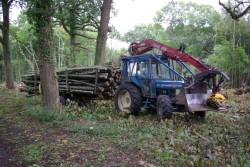 Forests and woodland are probably the most obvious sources of wood for fuel
Forests and woodland are probably the most obvious sources of wood for fuel
Although most wood can burn, if it is to be used safely and efficiently in modern, high efficiency combustion equipment without difficulties requires that it is processed and stored correctly
Information about the production of woodfuel as a co-product from forestry, timber production and woodland management
In order to be used as fuel wood will almost always need some form of processing, particularly drying and reducing to a suitable size, or chipping
Successful woodfuel supply requires that both the end user and the supplier understand unambiguously the fuel specification required. There are a number of different supply models
Following processing woodfuel must be handled and stored safely and carefully to ensure that it causes no hazard and maintains its specification and doesn’t degrade